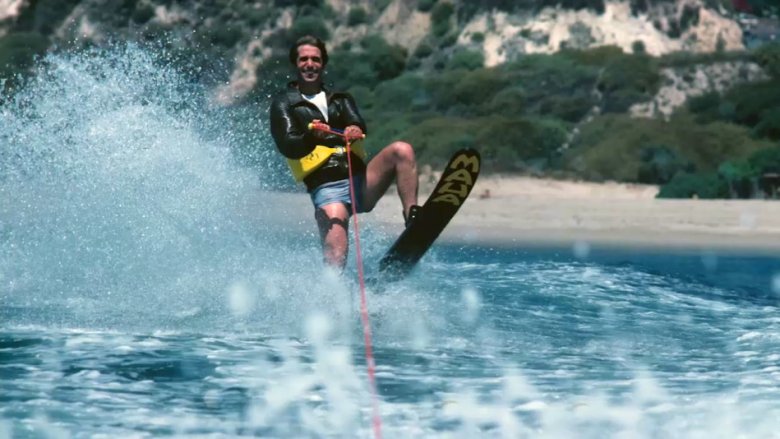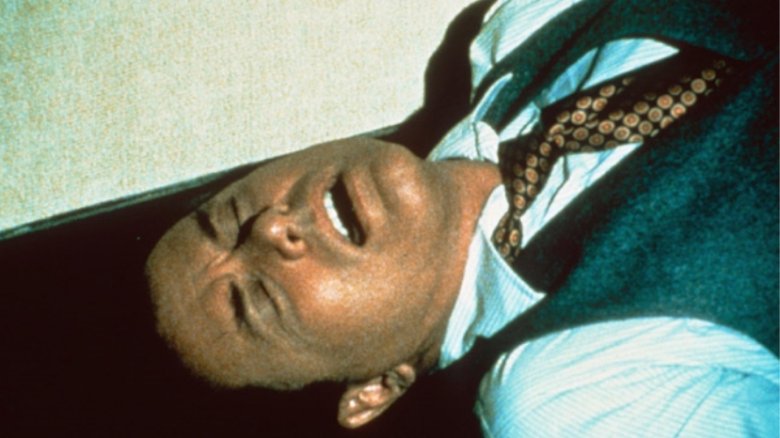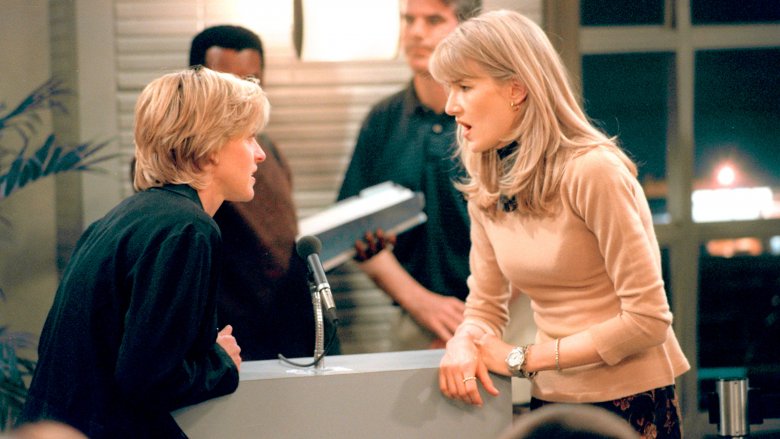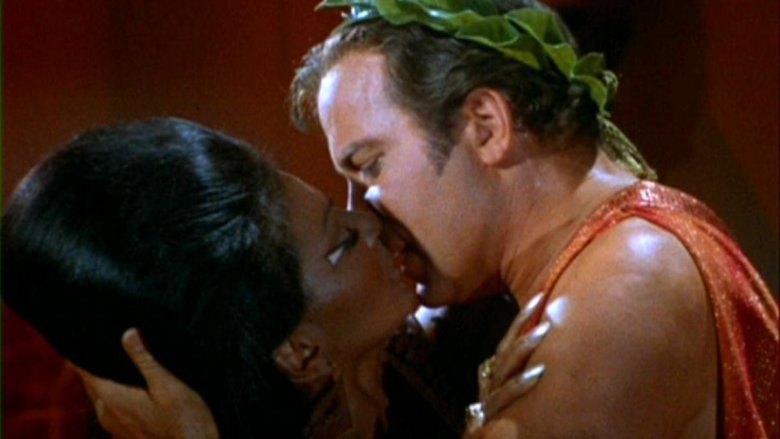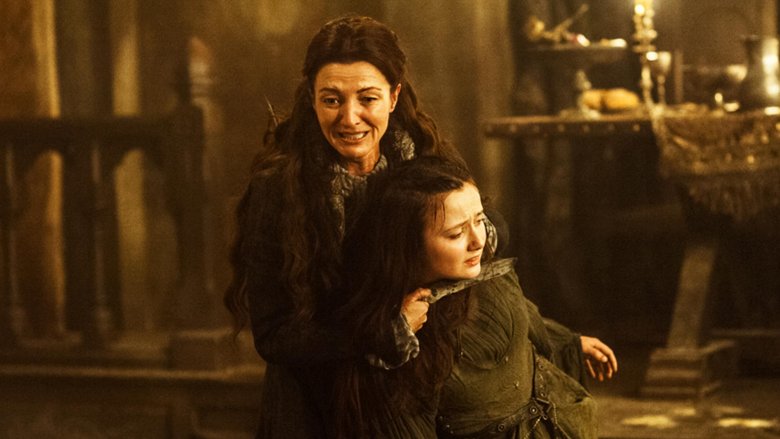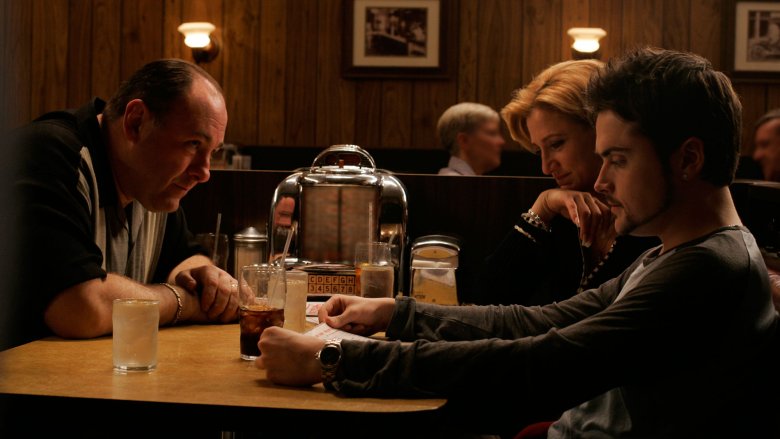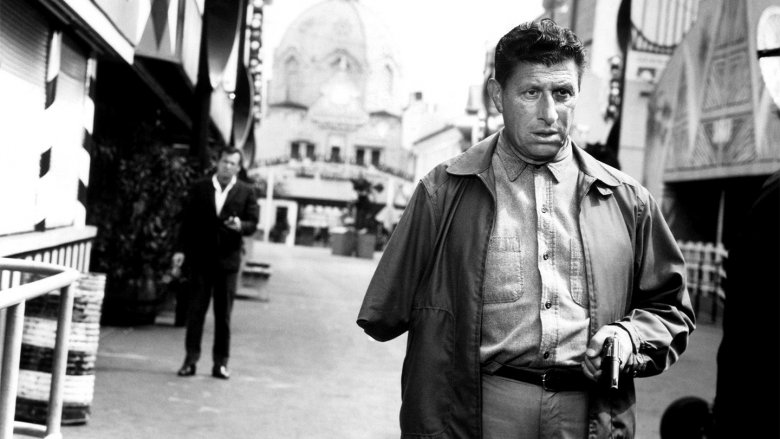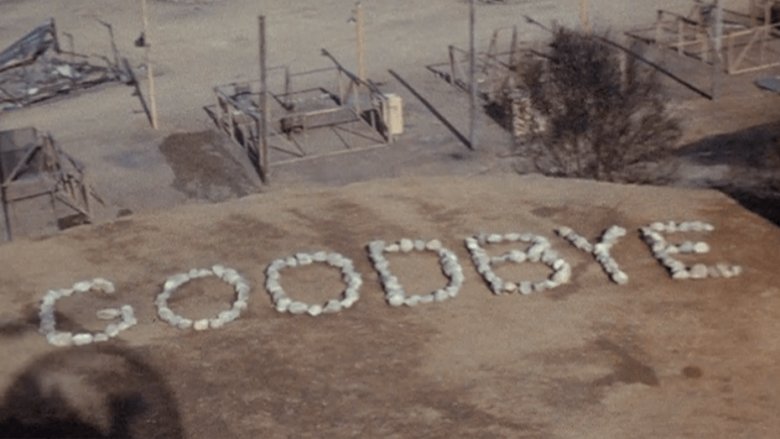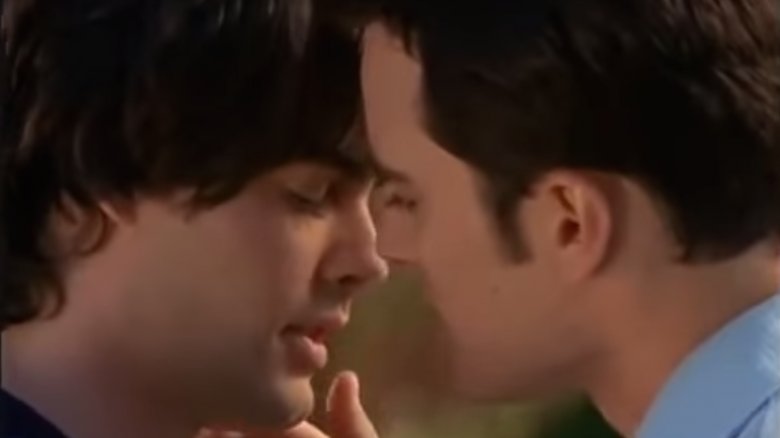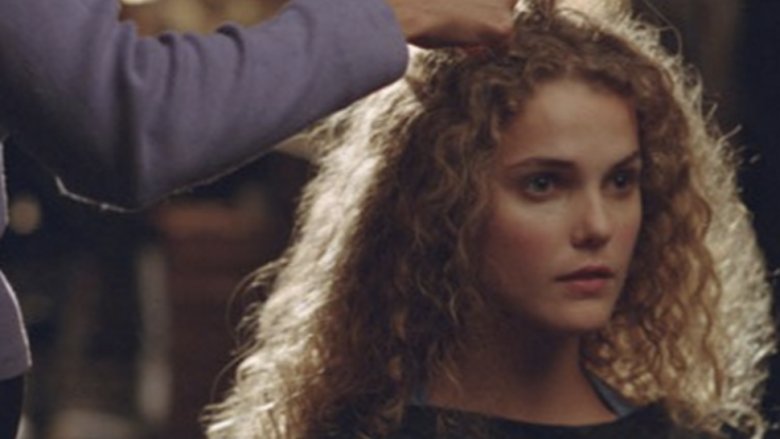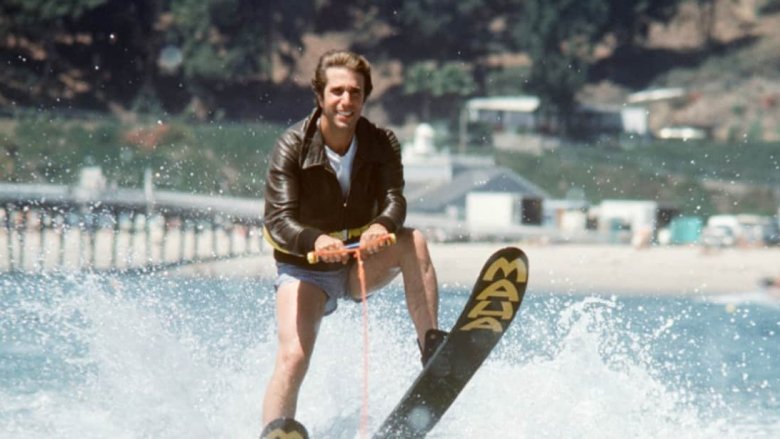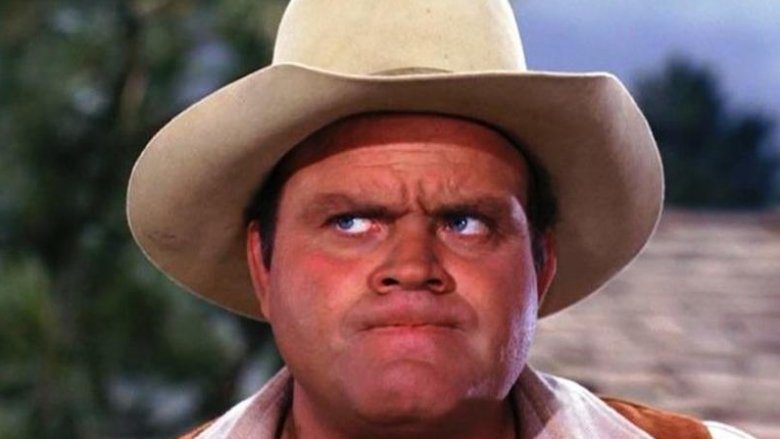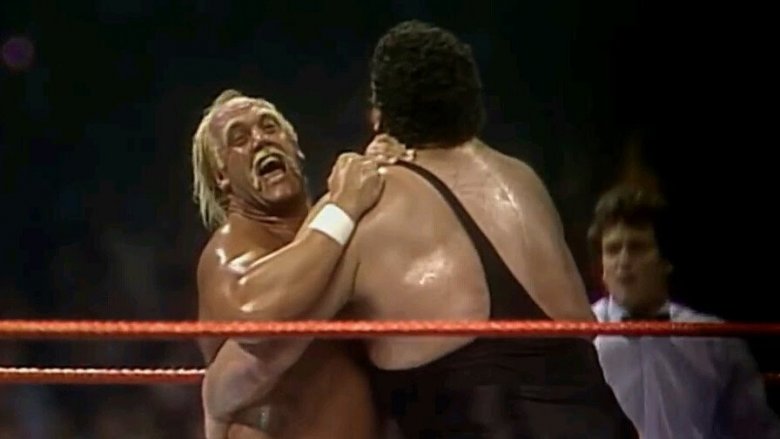The Truth Behind TV's Most Iconic Moments
Throughout television history, there have been countless memorable moments. Everyone has their own favorite shows and scenes, and we remember the things that impacted us personally. But some moments have a broader appeal. Some moments were so impactful, they created a "where were you when" effect when they aired. These moments changed the TV landscape entirely.
Most of the time, iconic TV episodes get that way by challenging the standards of their time. They present something so new, so exciting, or so jarring that they become the model to emulate. The images from these moments have been burned into our memories — those scenes that took on prejudices, the most shocking endings, and TVs biggest cliffhangers.
Yet, while we all know the story on the screen from these scenes, the behind-the-scenes stories have remained more mysterious over the years. So we decided to explore how these scenes came to be, including all the challenges that led to them and the fallout that resulted from them. Here is the truth behind TV's most iconic moments.
Who shot JR in Dallas?
The season three finale of Dallas firmly entrenched the nighttime soap opera into the annals of TV history. The final moments of that episode saw JR Ewing shot by an unknown assailant. As he fell to the ground, the credits rolled, the season ended, and the public hysteria began. The cliffhanger lit a fire in fans. "Who Shot JR?" turned into a national catchphrase. When the fourth season finally aired, Dallas was the country's number one show, and cliffhangers became a television staple. But the decision to shoot JR may not have been the stroke of brilliance it appeared to be.
According to Texas Monthly, CBS executives informed Dallas showrunners that they needed to make two additional episodes after they had already written the season finale. "Why don't we just shoot the bastard?" someone said, referring to JR Ewing. And so it was — without a resolution written or even considered. Then came the stand-off between Larry Hagman (JR Ewing) and the showrunners.
Dallas costar Steve Kanaly revealed to Texas Monthly that actor Carroll O'Connor advised Hagman to demand more money now that his value to the show skyrocketed. "If you're ever gonna hold 'em up, now's the time," O'Connor reportedly said. So Hagman held out. Bob Miller, the show's on-set men's costumer, also revealed to the publication that, to scare him into re-signing, the showrunners shot scenes with a "man bandaged up, like he'd been bludgeoned, so that they could bring on another actor after the character had reconstructive surgery on his face."
Ellen's iconic Puppy Episode
Shortly after Ellen DeGeneres came out publicly in a Time story in April 1997, her character, Ellen Morgan, came out on the Ellen sitcom. The episode in which Ellen blurted out her truth to everyone in the airport terminal, "The Puppy Episode," is celebrated as one of TV's most important moments — but it wasn't always that way.
Despite the episode nearly tripling the show's typical ratings, the negative response was immediate. According to BuzzFeed News, Ellen was hit with a parental advisory warning and critics questioned her "agenda." Advertisers pulled their ads, and ABC pulled the episode from airing in certain Southern cities altogether. Even GLAAD criticized DeGeneres and the show. Just a year later, Ellen was cancelled and its star labeled as "too gay" by some.
But the trouble started earlier and closer to home. The title of the episode itself, while doubling as a red herring, was a reference to an executive's resistance to Ellen's coming out. "The writers told the executives that they wanted me to come out, because my character needed to be in a relationship after four years of not being in a relationship," she said on an anniversary episode of her talk show in April 2017 (via Vanity Fair). "Someone at the studio said, 'Well, get her a puppy; she's not coming out.'"
A futuristic kiss for Trekkies
It may not have been the first televised interracial kiss, but William Shatner and Nichelle Nichols locking lips in the 1968 Star Trek episode, "Plato's Stepchildren," is the most iconic. After all, this was the same year that Petula Clark caused a national stir for touching Harry Belafonte's arm – apparently the first time a white woman touched a black man on television.
The scene was monumental in moving the needle forward and reshaping television prejudices and censorship. According to the actors, however, the kiss almost turned out much different. Nichols told the Vancouver Sun that the kiss was originally intended to be between Spock and Lieutenant Uhura, but Captain Kirk put his foot down. "Woah. Woah. Woah," she remembers Shatner saying. "If anybody is gonna get to kiss Lieutenant Uhura it's gonna be me." So the script was changed to appease the show's main star. "Bill wanted to rehearse all the time," she said.
But then the network executives tried to veto the episode, according to Shatner. Though the showrunners got their way, they needed to shoot the kiss with the actor's lips hidden so not to alienate Southern TV stations and audiences. While Shatner even claims that their lips never touched, this scene was much better than the alternative, off-camera option that was proposed. Nichols revealed in Beyond Uhura: Star Trek and Other Memories, "Bill deliberately destroyed the 'nonkiss' take, so the network had no choice but to air the real kiss.
GOT's chilling Red Wedding
Fans of A Song of Ice and Fire knew the Red Wedding was coming long before it aired on television's Game of Thrones. According to the showrunners, it was that very scene that convinced them to take on the show in the first place.
The tragic slaughter within the walls of House Frey in "The Rains of Castamere" represents one of the show's lasting images. It became one of the most talked about TV moments in history and recordings of people reacting to the episode's shocking ending popped up everywhere. It further cemented Game of Thrones as a show that had no qualms about killing off its main characters.
The episode was enormously successful, but it set in motion a rift between the show and books, the showrunners and the series author, George R.R. Martin. "At some points, when David [Benioff] and Dan [Weiss] and I had discussions about what way we should go in, I would always favor sticking with the books, while they would favor making changes," Martin told Time. "I think one of the biggest ones would probably be when they made the decision not to bring Catelyn Stark back as Lady Stoneheart. That was probably the first major diversion of the show from the books and, you know, I argued against that."
In a later interview with the Chinese Esquire (via CNET), Martin said that keeping Catelyn "is the change I most wish I could make in the (show)."
The Sopranos' controversial fade to black
The Sopranos ushered in a Golden Age of television, but when the series finale ended with a fade to black, the reaction was mixed, to say the least. Viewers were left with the image of Tony Soprano eating onion rings, the sounds of Journey's "Don't Stop Believin,'" and the nagging question of whether he lived, died, or something else altogether.
If nothing else, the ending was ambitious. It created an obsession among fans trying to decipher what really happened. Since the finale aired, creator David Chase has fielded countless questions about his thoughts on what happened. Though he's been firm on his stance to leave interpretation up to fans, he has revealed some information that may provide a hint about his intentions.
"I think I had that death scene around two years before the end. ...but it wasn't — it was slightly different," he said in an interview from The Sopranos Sessions (via AVClub). "Tony was going to get called to a meeting with Johnny Sack in Manhattan, and he was going to go back through the Lincoln Tunnel for this meeting, and it was going to go black there and you never saw him again as he was heading back, the theory being that something bad happens to him at the meeting. But we didn't do that"
While Chase has explained that those comments might misrepresent his actual stance on the eventual finale, they certainly provide the "Tony is dead" fans with plenty of ammunition.
The Fugitive's one-armed man
For most of its run in the 1960s, The Fugitive was popular, but it wasn't setting the world on fire. After season one, it sat 28th in ratings. Season two earned the show a top-ten spot, but then it dropped, explained Ron Simon, curator of Television and Radio at the Paley Center for Media in New York, to Vanity Fair. "By the third and fourth season, the show wasn't gathering momentum." But fans still cared about the show.
But The Fugitive was unique for its overarching multi-season mystery lingering over every episode. Would Richard Kimble solve his wife's murder and find the one-armed man? As the series neared the end, producer Leonard Goldberg knew that a proper ending was absolutely necessary.
"I realized we were going to leave viewers empty-handed, and that was wrong," Goldberg he told Vanity Fair. "I went to the [higher-ups] at the network and said, 'We have to give people a conclusion.'" Apparently, the execs weren't so sure. In fact, they argued that TV audiences wouldn't even care and that a neatly ended series might not fare well in syndication.
"They are deeply invested," Goldberg argued. "This is our business; we are selling advertisers on the power of television, and yet we ourselves don't believe it? That seems odd." He won his fight. The two-episode finale aired and obliterated records. Of all TV viewers that night, 72% of them watched a finale for a show that hadn't been in the top 30 TV shows for two years.
When M*A*S*H ended the Korean War
More than 25 years after it ended, M*A*S*H is considered one of the greatest TV shows ever made. For 11 years it maintained its audience and popularity. In its final season, the show ranked third in ratings. Fearing it would linger on and eventually fade into obscurity like so many other shows, the cast wanted to ensure M*A*S*H got a proper ending.
"I mentioned that I had concerns about the way the show ends," Mike Farrell, one of the show's stars, told The Hollywood Reporter of a conversation he had with Alan Alda. "He said I was right and that maybe we should talk to everyone about whether the show should come to a halt. We didn't want to ride the horse downhill to get to the point when a studio exec pulls the plug on us."
"We decided to end the war, so we could say goodbye and thank you to the audience and each other," Farrell further explained to THR. But they received resistance from the studio. An "end of war" episode, the studio argued, would kill the show in syndication. "It might surprise you to know the Korean War ended," Farrell said.
Despite the studio's trepidation, they ended the war and the show. The finale shattered television records, many of which still stand today. But, in true pulling back the curtain fashion, the actual finale wasn't the final episode they shot. That was actually "As Time Goes By," as reported by THR.
Jack's kiss with Ethan on Dawson's Creek
There had been several joke kisses before it, but Jack and Ethan's passionate kiss on Dawson's Creek in 2000 was truly the first of its kind. Nearly 20 years later, we appreciate it for the groundbreaking moment it was. It's considered one the major milestone moments for gay representation in pop culture. It was also a big moment for Dawson's Creek – but it almost never happened.
According to the showrunner, Greg Berlanti, he had to really push the WB network to allow the only gay character on Dawson's Creek to have some on-screen romance. In fact, the kiss was only greenlit after he threatened to quit the show, he said in an interview with Vanity Fair. James Whitmore, the famous episode's director, told The Huffington Post that the WB allowed it because it liked the publicity more than it feared the potential backlash.
Even after they allowed it, there was on-set resistance. "The network said they wanted it filmed across the street from a very, very wide shot," said show writer Gina Fattore to Vanity Fair. "I was the one who was on set to produce it. Greg said to me, 'I want this to be a great kiss. I want there to be close-ups, and I want it to feel romantic.'"
Felicity's haircut was not received well
Despite being nominated for two Golden Globe awards and winning of one, Felicity is most remembered for the hair incident. In the second episode of season two, Felicity (Keri Russell) walked into a hair salon, her long voluminous curls bouncing behind her, and did the unthinkable. She got a haircut.
It sparked outrage with fans. "The e-mail alone was so overwhelmingly negative about that haircut," Susanne Daniels, the WB Entertainment president, told critics on the show's Winter Press Tour (via The Baltimore Sun). "Do I think it affected the show on some level? Yeah, I do — however superficial that seems, unfortunately." The ratings fell and the haircut was blamed. Russell and the show became a cautionary tale, one that warned against TV stars making drastic changes to their look while filming a show. It became an industry joke.
Ironically, it started that way as well. "They were wrapping up the first season... and the hair people were putting away everything they had into boxes and there was a little boy's wig," Russell said during a reunion panel (via E! News). "We put it on me at like 2 in the morning as a joke... and we took a polaroid and over the summer we thought it'd be really funny to send to J.J. (Abrams) and Matt (Reeves) and say, 'I cut my hair — hope you like it.' Totally as a joke."
Fonzie jumps a shark
"Jumping the shark" is a term that, according to TV Tropes, describes "the moment when an established long-running series changes in a significant manner." These moments may refer to a timestamp in the show, a symbolic scene, or the introduction of a new gimmick.
The birth of this phrase comes from Happy Days. In season five, during the third part of "Hollywood," Arthur "Fonzie" Fonzarelli (Henry Winkler), jumped a shark while on waterskis and donning his iconic leather jacket. Now, the idea that Fonzie would jump a shark might seem preposterous, and it was, but it was grounded in something pure: a father's love.
Apparently the waterskiing bit was all his father's idea. Since Winkler was an avid waterskier, his father advised him to suggest his character ski on Happy Days. "My father — a very, very, very short German person — he said, 'Tell them you water-ski,'" Winkler explained to Oprah on an episode of Where Are They Now? on OWN (via HuffPost). "I said, 'Dad, I probably won't do that...' He said, 'No, no, no, this is important they know this! You tell them you water-ski!'"
And what about the shark? According to Fred Fox Jr., a producer on Happy Days, no one remembers whose idea it was, though Fox does remember one thing. "What I definitely remember is that no one protested vehemently," he said. "Not one of us said, 'Fonzie, jump a shark? Are you out of your mind?'"
Hoss dies on Bonanza
In 1972, actor Dan Blocker died of a blood clot in his lung, a complication from an earlier gall bladder surgery. The death of the 43-year old actor came as a shock to everyone. It also created a large-sized hole to fill on Bonanza, the show Blocker had starred on as Eric "Hoss" Cartwright for 13 seasons.
Throughout the entirety of the 1960s, Bonanza was a top five show in ratings, and Hoss was a beloved member of the family. The showrunners couldn't simply ignore his death, and they couldn't write him off the show without a fair explanation. So they did something that had never been done before. The showrunners wrote in a death for a character.
When season 14 started, the two-part episode "Forever" was noticeably Hoss-less. "Just as we personally suffered a loss," Bonanza producer Richard Collins said, "so the audience suffered one, too." While Hoss' death is not explicitly dealt with or explained, his passing is referenced several times.
"We try to mention Hoss' death very simply, in passing... it might not please everybody. I'm sure that some people would rather have a whole hour memorial to Dan, but we just couldn't do that," co-star Michael Landon said. "We tried to do what we thought he would have wanted us to do." Years later, in the syndicated follow-up series Bonanza: The Next Generation, it was finally revealed that Hoss had drowned trying to save someone's life.
Wrestlemania III's meeting of giants
Wrestlemania III in 1987 was one of the biggest sporting entertainment events in history at the time. Though the actual in-house viewer numbers are disputed, millions across the country watched as Andre the Giant and Hulk Hogan faced off in the main event. The match went off without a hitch. Hogan showcased his legendary strength by slamming Andre and retaining his title. But the match almost never went off at all, and it certainly wasn't rehearsed. In fact, Complex reported that Hogan admits that he didn't even know if Andre was on board with him winning until the 11th hour.
In the ring and on screen, the match looked like a David vs. Goliath battle. Behind-the-scenes, however, it was more of a tragedy. "Andre was in terrible shape physically by that point in time," said wrestling historian Dave Meltzer revealed to Detroit News. "I've heard he was numb from the knees down and things like that. He couldn't do much of anything, he could barely move."
Watching the tape back, something clearly isn't right. Andre labored in the ring, often using the ropes for support. As for the "Slam Heard Around the World," Andre may have suggested it, but it also hid a sobering truth. "I know he had back surgery in '86, or else he wouldn't be able to wrestle," said Meltzer. "It was a famous surgery where they had to get new tools because the tools you'd use on normal human beings wouldn't work for him"

